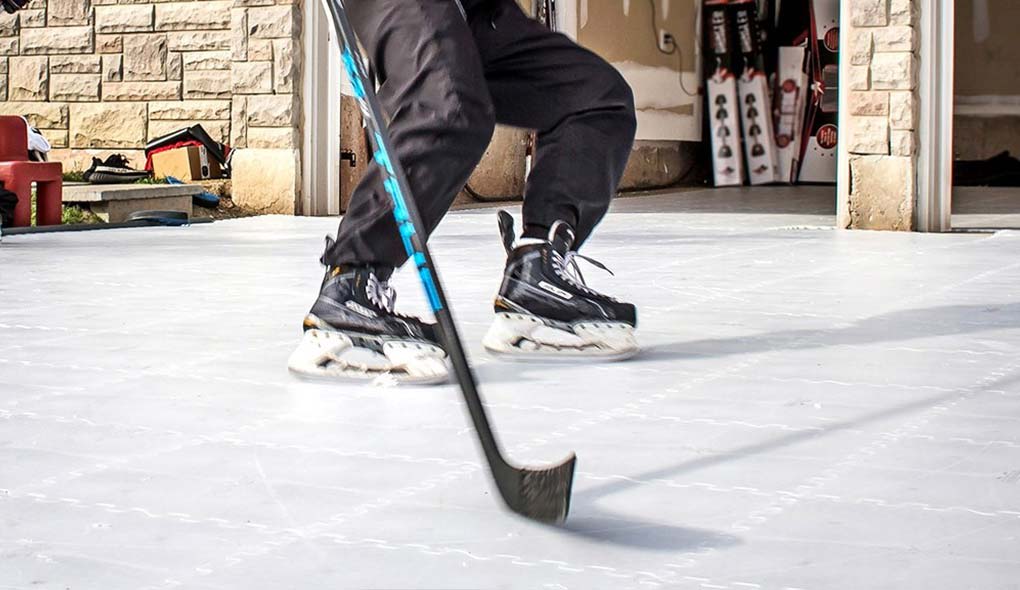It is almost the middle of 2021 now and a lot has happened over the last year. During the pandemic when everybody was stuck at home with nowhere to go, millions of hockey players found that they could easily install synthetic ice in their homes and be able to ice skate and practice without having to leave the house. Although it is not exactly like real ice, synthetic ice flooring is as close as you can get to the real thing. How does it work? Keep reading and we will explain.
What is Synthetic Ice?
When it first came into the world back in the 1960s, synthetic ice was not the way it is now. It was made from old-style polymers like polyoxymethylene plastic. Back then the flooring was not slick like it is today, and in order for skaters to skate on it, there needed to be a constant supply of lubricant. The lubricant at that time was a type of silicone compound that had to be constantly applied, then scraped away and re-applied. Dirt, sand, rocks, and other debris would become embedded in the solution and cause terrible buildup problems.
Over the span of decades, synthetic ice has evolved into a lightweight, easy to install hockey flooring solution that people can enjoy just about anywhere. The polymer plastic that forms the synthetic ice that we know today can be infused with special lubricants that automatically lubricate the surface so that there is no need for an extra lubricant to be added to the flooring. Ever.
Although there is a slight drag and a little more resistance than when skating on real ice, there is not a huge difference at all. In fact, the slight drag can help with strength training and stamina.
Real Ice vs. Synthetic Ice
The main difference between real ice and fake is, obviously, that one is real and the other is an imitation of the real. Ice is formed when water freezes. Synthetic ice is formed out of polymer in a factory. However, the way that skates glide across the surface of each is similar. With ice, when a skater glides across the surface with ice skating blades, the friction from the blades across the surface causes enough heat to melt the ice just enough to act as a natural lubricant. This is why ice skating on a real ice rink is so free and easy with very little resistance. As for synthetic ice, when the panels are being formed, extra additives go into the mixture so that the surface mimics ice as the skater glides across it. The skates gliding across the surface allow the lubricant to come to the surface and help with the flow of the skating experience.
Which is Better?
Although each person will have their own opinion about which flooring is better, ice or synthetic ice, one thing stands true. Synthetic ice is a lot easier to install and maintain than real ice. In order to install an ice rink into your home, you would have to have a specially created room equipped with enough coolant to keep the ice frozen. With synthetic ice, all you need is a little bit of room and a hard, flat surface. Synthetic ice is affordable, simple to use, and better for the environment.
***Sniper’s Edge Hockey loves Canada! We proudly ship all of our products to Canada and offer the same return policies as we do for everybody else. We realize the exchange rates for the Canadian dollar are not the best right now, so we’re trying to help by giving you free shipping and no customs/duty.***



